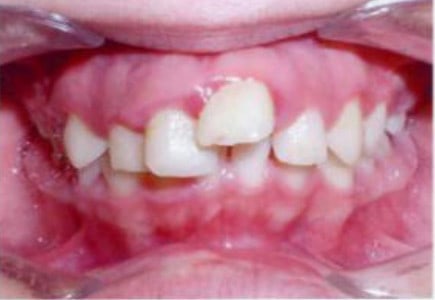 This past week, TDMR came across the State Of Texas Medicaid Managed Care Dental Rate Setting reports on the Texas HHS Provider Finance web portal.
This past week, TDMR came across the State Of Texas Medicaid Managed Care Dental Rate Setting reports on the Texas HHS Provider Finance web portal.
These are the third-party actuarial reports compiled for Texas HHS to recommend the per-member, per-month Medicaid dental premium rates for dental maintenance organizations contracted with the state. So, the capitation rates for MCNA, DentaQuest, and now UnitedHealth Dental per eligible Medicaid child member per month each year.
The reports cover the period from July 2012, the beginning of dental managed care, to 2024 and contain a treasure trove of information.
Start of dental managed care
The introduction to the 2012 report, the first one, is worth sharing, especially if one is familiar with the Great Xerox/Conduent Orthodontic Medicaid Debacle which brought about dental managed care in the state. Rather than repeat yet again the story after thirteen years, suggested reading is The Facts About the Medicaid Orthodontic Scandal 2007 to 2012 and The Truth Finally Comes Out…
Effective March 1, 2012 the Texas Health and Human Services Commission (HHSC) implemented a dental managed care program for all of its Medicaid members under the age of 21. Previously, HHSC was directly financially responsible for the provision of all dental and orthodontia services. Effective with this change, the Managed Care Organizations (MCO) will be financially responsible in consideration for monthly premiums.
Rudd and Wisdom, Inc. has been retained by HHSC to develop premium rates for the period September 1, 2012 through August 31, 2013 (FY2013) for those MCOs participating in the Texas Medicaid Dental program. This report presents the rating methodology and assumptions used in developing the dental premium rates.
Rudd and Wisdom has provided actuarial services to the Texas Medicaid program for over 25 years. We have participated in the state’s managed care rating process since its inception in 1993. We have worked closely with HHSC’s staff in developing the premium rates documented in this report.
Rudd and Wisdom has relied on the following data sources as provided by HHSC and its subcontractors:
• Monthly detailed enrollment files for the period September 2007 through February 2012.These files (provided by HHSC) include member identification, health plan code, Zip Code, risk group and date of birth for all Medicaid members.
• Managed care and fee-for-service enrollment for the period March 2012 through July 2012.
• Projected monthly enrollment by risk group for the period September 2012 through August 2013. These projections were prepared by HHSC System Forecasting staff.
• Dental and orthodontia fee-for-service claim lag reports by age group and type of service provided by Texas Medicaid and Healthcare Partnership (TMHP) for the period September 2007 through May 2012.
• Dental and orthodontia fee-for-service claims data. This report (ST650) includes paid claim amounts by month of service. We compared this report to the claim lag data provided by TMHP to confirm that all dental and orthodontia claims were included in our analysis.
• Detailed claim files for all dental and orthodontia services provided by the MCOs for the period March 2012 through June 2012.
• Information from the MCOs regarding the number of orthodontia authorizations for the period March 2012 through June 2012.
• Information from HHSC regarding recent changes to the prior authorization requirements for orthodontia services.
• Information from HHSC regarding payment patterns for orthodontia services.
• Information from HHSC regarding the cost of providing continuation of care for those clients currently receiving orthodontia treatment.
Although the above data was reviewed for reasonableness, Rudd and Wisdom did not audit the data
99.7% decrease in ortho spending
The first takeaway from these reports is that they show ortho spending estimates and incurred claims.
The 2013 report estimates that orthodontic spending for FY2011 would be $250,063,220.

The 2024 report shows that ortho spending in 2022 was $786,990.

That’s a 99.7% drop in orthodontic spending. The state appears to be able to control its spending when it wants.
Lowest in the country?
One has to wonder, with Texas being the third most populous state in the union, if this might not be the lowest of any state for Medicaid orthodontia.
Will WFAA now conduct a new investigation into whether Texas spends the least on Medicaid orthodontia in the country?


Where did all that potential dental medicaid money go that kids could be benefitting from